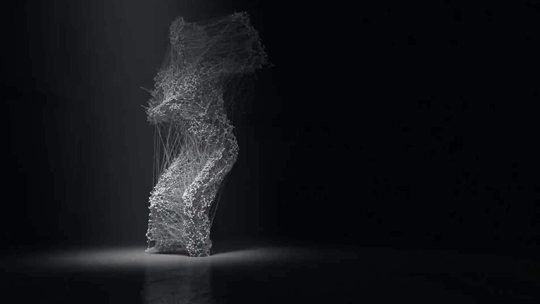AREAS OF FOCUS
Acting strategically with emerging technology requires an understanding of the systemic implications of new tech and the unique design challenges of new mediums.
Rachel's strategy and design work is informed by deep research across disciplines, and by her academic background in Computational Neuroscience, Spatial Economics, and Data Analysis. Rachel presents her research through workshops, talks, and written deliverables.
1 Audience & Brand Systems
Customer Journeys / Omni-Channel Experience / Service Design / Consumer Segmentation / Audience Intelligence / Fan and Consumer Engagement / Participatory Culture / Gamifying E-Commerce / Brand Experience Ecosystems / Platform Strategy
2. Narrative & Storyworld Systems
Transmedia Storytelling / Franchise Storytelling / New Distribution Pathways / Media Production Pipelines / Synthetic Media / Narrative UX / Synthetic Storyworlds / Worldbuilding / Hybrid Media / Immersive Theater / ARGs / LARPs / Location Based Experiences / Procedural, Responsive, and Emergent Narratives
3. Intelligence & Perception Systems
Extended Intelligence / Cognitive Architecture / Embodied and Environmental Intelligences / Perception / Consciousness / Planetary Intelligence / Alien Intelligence / Artificial Life / Computational Intelligence / Synthetic Beings / Synthetic and Alternate Intelligence / Bio-Responsive Design
4. Interface & Symbolic Systems
Personal Computing / Spatial Computing / Ambient Computing / Affective Computing / Interfaces / Interaction Design / Information Architecture / Symbol Systems / Language / Memetics / Semiotics / Nature of Code / Creative Tooling
5. Spatial & Environmental Systems
Spatial Web / Smart Cities / Digital Twins / Computational Urbanism / Placemaking / Spatial Design / Movement / Form / Material Intelligence / Responsive Architecture / Masterplanning / Wayfinding / Cartography
6. Resource & Economic Systems
Resource Ecologies / Regenerative Systems / Responsive Product Manufacturing / Protocol Governance / New Economic Models / Virtual Economics / GameFi
7. Speculative & Innovation Systems
Speculative Design / Critical Tech / Worldbuilding as Futures Methodology / Predictive Analytics / Industry Mapping / Trend Forecasting / Strategic Foresight / Innovation Ecosystems / Systems of Innovation / Change Management / Stakeholder Alignment / Startups
AI + Storytelling
In Progress: Design frameworks for new models of storytelling and media production that blend generative and procedural models

Design Principles for Web3
Developed underlying design principles for Web3 as it intersects with physical realities. Explored the different categories of experience design across the Spatial Web and the Metaverse, the affordances of physical versus virtual spatial worlds, data and information translation as enabled through interfaces and interaction, the nature of identity and avatars, cognitive architectures for building responsive systems, and infrastructural needs of Web3 as it intersects with broader world systems.
Experience Ecosystems
Web3 Strategy for Product and Narrative Brands
Strategic research on overarching principles for offering a continuous brand experience across touchpoints that leverages the affordances of emerging mediums. Mapped the abilities of emerging mediums to engage consumer and build fans.


Worldbuilding + Virtual Production
Workflows
Designed process for transmedia narrative productions that incorporates world building at its core while analyzing the inefficiencies and bottlenecks across production workflows in a variety of mediums. Collaborated with production design and VFX team to develop look and layout of worlds to be modeled in Unreal Engine, and guided directors in aligning narrative and world design.
Transmedia Narrative Design
Mapped narrative affordances of various mediums, from games and comics, to plays and virtual reality. Explored ways to build nonlinear narratives, from role creation for participants to mechanics of engagement and principles for persistent transmedia storytelling across franchise storyworlds.

Designing Innovation
Designed frameworks to enable brand and product innovation from a mapping of ecosystems and complex problems spaces. Explored the relationship between problem space definition and product design, and representations of user needs across personas, stories, and systems diagrams.
Worldbuilding Responsible Tech Futures Workshop
Hack for Hope Lectures
Design for Complex Problems Lecture
Head of Design, Open Innovation Studio
Cognitive Architecture + Systems Design
Designed frameworks and pattern languages for building responsive systems for user interaction in immersive worlds and ambient computing contexts. Developed systems for building procedural and responsive worlds. Drew from research on the neuroscience of empathy, affective computing, embodied cognition, and spatial presence, while cross-referencing with studies from social science, media research, and other relevant disciplines.


Participatory Culture
Research centered on finding innovative solutions for content creation, monetization, and distribution in the digital creator economy. Studied monetization strategies of digital creators, social platform design, fan engagement, and millennial and Gen Z content engagement behaviors
Logics of Fan Engagement
Watson-enabled quantitative data analysis and focused fan interviews/tiered survey for a Hollywood brand on the key fan engagement mindsets, targeted to differentially parse patterns of fan engagement. Studied mindset differentiation in terms of platform engagement, purchasing differences, and gender. Presented actionable product and business recommendations to increase franchise engagement and monetization



Engaging Cities
Analyzed the trends driving the use of public spaces for consumer engagement across automotive, entertainment, retail, banking, and travel industries. Explored the integration of evolving technologies and entertainment with the city of the near future, in order to project the cultural and industry landscape in physical city spaces 18 months in the future.
